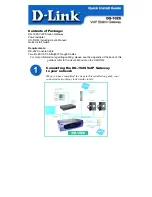
Using the Firebox SSL VPN Gateway
26
Firebox SSL VPN Gateway
Establishing the Secure Tunnel
After the Secure Access Client is started, it establishes a secure tunnel over port 443 (or any configured
port on the Firebox SSL VPN Gateway) and sends authentication information. When the tunnel is estab-
lished, the Firebox SSL VPN Gateway sends configuration information to the Secure Access Client
describing the networks to be secured and containing an IP address if you enabled IP pool visibility.
Tunneling Destination Private Address Traffic over SSL or TLS
After the Secure Access Client is authenticated and started, all network traffic destined for specified pri-
vate networks is captured and redirected over the secure tunnel to the Firebox SSL VPN Gateway.
The Firebox SSL VPN Gateway intercepts connections that are to be tunneled (usually trafic to your
according to your policy, and multiplexes/tunnels them over SSL to the Firebox SSL VPN Gateway.
where the traffic is demultiplexed and the connections are forwarded to the correct host and port com-
bination.
The connections are subject to administrative security policies that apply to a single application, a sub-
set of applications, or an entire intranet. You use the Firebox SSL VPN Gateway Administration Tool to
specify the resources (ranges of IP address/subnet pairs) that remote users can access through the VPN
connection.
If the device is configured todo this, all IP packets, regardless of protocol, are intercepted and transmit-
ted over the secure link. Connections from local applications on the client computer are securely tun-
neled to the Firebox SSL VPN Gateway, which reestablishes the connections to the target server. Target
servers view connections as originating from the local Firebox SSL VPN Gateway on the private network,
thus hiding the client IP address. This is also called
reverse Network Address Translation
(NAT). Hiding IP
addresses adds security to source locations.
Locally, on the client computer, all connection-related traffic (such as SYN-ACK, PUSH, ACK, and FIN
packets) are recreated by the Secure Access Client to appear from the private server.
Operation through Firewalls and Proxies
Users of Secure Access Client are sometimes located inside of another organization’s firewall, as shown
in the following illustration.
Network topology connecting through an external corporate firewall.
Summary of Contents for SSL 1000
Page 1: ...WatchGuard Firebox SSL VPN Gateway Administration Guide Firebox SSL VPN Gateway...
Page 40: ...Using the Firebox SSL VPN Gateway 30 Firebox SSL VPN Gateway...
Page 118: ...Setting the Priority of Groups 108 Firebox SSL VPN Gateway...
Page 146: ...Managing Client Connections 136 Firebox SSL VPN Gateway...
Page 168: ...Generating Trusted Certificates for Multiple Levels 158 Firebox SSL VPN Gateway...
Page 190: ...180 Firebox SSL VPN Gateway...
Page 198: ...188 Firebox SSL VPN Gateway...
















































